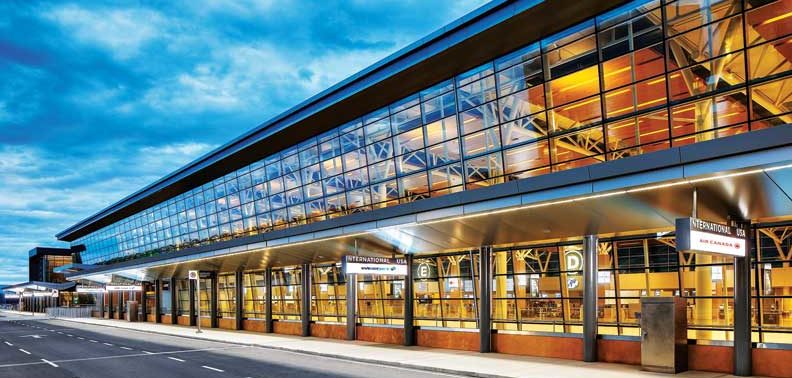
One of the primary objectives was to create a seamless system, from when passengers arrive through to their boarding gate.
Studies and the master plan
As mentioned, the eastward expansion required a new master plan for the layout and numbering of terminals and concourses. The gate renumbering process took place in 2014.
The terminals themselves were also redesignated, with Concourse C renamed Concourse A at the airport’s west entrance, then moving east to the new terminal’s Concourse D and Concourse E, which would open in 2016.
To determine the best strategy for indicating these changes with signage, Entro’s team—including designers Leah Ferguson and Raymundo Pavan and associate Chris Herringer—conducted an extensive process of preconstruction research and testing. This included talking to airport staff about any ‘pain points’ and existing issues that could be solved and observing passengers to check if they could easily and quickly understand information presented to them on signs.
There were also flow studies to find out how the passengers naturally moved throughout the airport, which would help Entro understand the optimal locations for sign placement. Accessibility studies, meanwhile, helped ensure the new wayfinding system would support ease of travel for physically, visually or otherwise impaired passengers.
“We can’t design in a vacuum,” says McTaggart. “Everything we do related to wayfinding is about the user group, i.e. the passengers. The more we can understand what their challenges are, the better we can design for these and create a more positive experience overall.”
The call-to-gate system
Along with the new terminal, Calgary Airport introduced the first call-to-gate system in Canada. Developed for passengers travelling to the U.S. and other destinations outside the country, the system is intended to prevent cluttering of the gates’ waiting areas and allow more flights to move in and out.
“The passengers wait in a common area and don’t know their gate number until the flight starts boarding,” explains Wayne McCutcheon, Entro’s partner in charge. “Clear communication is incredibly important because people have to be informed not only when their flight is called, but how far away their gate is.”
Rather than printing gate numbers onto passengers’ boarding passes, the airport designates the concourse name on each ticket. That concourse is where passengers do the majority of their waiting, until they are notified of their gate number.
As such, wayfinding has a crucial role to play. The flight information displays (FIDs) that indicate flights’ gate numbers shortly before the boarding times must work cohesively and comprehensively with the call-to-gate system, gate podiums and gate identification signage throughout the entire airport, to ensure passengers receive clear directions and are not further confused by disjointed messaging.





